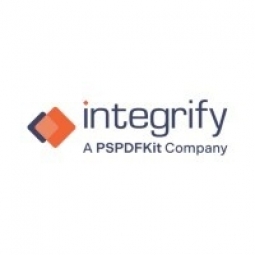技术
- 应用基础设施与中间件 - 数据库管理和存储
- 网络安全和隐私 - 应用安全
适用行业
- 运输
- 公用事业
适用功能
- 人力资源
- 仓库和库存管理
用例
- 自主运输系统
- 篡改检测
服务
- 系统集成
- 培训
关于客户
北方天然气公司是一家总部位于内布拉斯加州奥马哈的公司,运营一条从德克萨斯州二叠纪盆地延伸至中西部北部的州际天然气管道。该公司为中西部北部约 75 家公用事业公司和众多最终用户提供运输和存储服务。它还提供二叠纪、阿纳达科、雨果顿和中西部地区其他州际和州内管道之间的交叉运输和电网运输。随着公司的发展,审批流程面临着挑战,对于 1,100 名员工来说,审批流程变得繁琐且耗时。
挑战
北方天然气 (Northern) 是一家总部位于内布拉斯加州的公司,经营州际天然气管道,其审批流程面临挑战。随着公司规模的扩大,审批流程对于 1,100 名员工来说变得越来越繁琐和耗时。该流程依赖电子邮件和手动转发消息来请求和批准,缺乏可靠的审计跟踪,导致请求经常在路由过程中丢失。 Northern 寻求一种解决方案,能够提供安全、自动的批准通知,从而节省员工的时间。他们需要一个符合审计要求的安全审批流程以及可靠的审计跟踪。该解决方案必须功能齐全,以实惠的价格与现有系统无缝集成。此外,Northern 需要一种能够处理所有级别的请求的产品,从客户服务交互到内部员工事务。
解决方案
Northern 选择 Integrify 解决方案是因为其具有竞争力的价格和提供的功能。 Integrify 是一种灵活的业务流程管理工具,可自动执行请求并简化审批流程。它为负责处理请求的人员提供表单创建、路由定义和跟踪工具,从而最大限度地减少数据输入并简化审批和履行请求。 Integrify 基于网络,允许用户轻松访问和管理审批流程。它消除了与人工纸张处理和电子邮件请求等劳动密集型流程相关的问题,与纸质流程相比,每笔交易的成本降低了 60% 至 90%。 Integrify 团队花了一周时间现场安装和实施该软件。安装过程中的唯一挑战是更新内部信息,以便 Active Directory 数据库可以确保请求的正确路由。完成后,Northern 已将 Integrify 的技术应用到其业务的几个关键领域。
运营影响
数量效益

Case Study missing?
Start adding your own!
Register with your work email and create a new case study profile for your business.
相关案例.

Case Study
IoT Solutions for Smart City | Internet of Things Case Study
There were several challenges faced: It is challenging to build an appliance that can withstand a wide range of voltage fluctuations from as low at 90v to as high as 320v. Since the device would be installed in remote locations, its resilience was of paramount importance. The device would have to deal with poor network coverage and have the ability to store and re-transmit data if networks were not available, which is often the case in rural India. The device could store up to 30 days of data.

Case Study
Automation of the Oguz-Gabala-Baku water pipeline, Azerbaijan
The Oguz-Gabala-Baku water pipeline project dates back to plans from the 1970’s. Baku’s growth was historically driven by the booming oil industry and required the import of drinking water from outside of the city. Before the construction of the pipeline, some 60 percent of the city’s households received water for only a few hours daily. After completion of the project, 75 percent of the two million Baku residents are now served around the clock with potable water, based on World Health Organization (WHO) standards. The 262-kilometer pipeline requires no pumping station, but uses the altitude differences between the Caucasian mountains and the capital to supply 432,000 m³/d to the Ceyranbatan water reservoir. To the people of Baku, the pipeline is “the most important project not only in 2010, but of the last 20 years.”

Case Study
GPRS Mobile Network for Smart Metering
Around the world, the electricity supply industry is turning to ‘smart’ meters to lower costs, reduce emissions and improve the management of customer supplies. Smart meters collect detailed consumption information and using this feedback consumers can better understand their energy usage which in turn enables them to modify their consumption to save money and help to cut carbon emissions. A smart meter can be defined in many ways, but generally includes an element of two-way communication between the household meter and the utility provider to efficiently collect detailed energy usage data. Some implementations include consumer feedback beyond the energy bill to include online web data, SMS text messages or an information display in consumers’ premises. Providing a cost-effective, reliable communications mechanism is one of the most challenging aspects of a smart meter implementation. In New Zealand, the utilities have embraced smart metering and designed cost effective ways for it to be implemented. The New Zealand government has encouraged such a move to smart metering by ensuring the energy legislation is consistent with the delivery of benefits to the consumer while allowing innovation in this area. On the ground, AMS is a leader in the deployment of smart metering and associated services. Several of New Zealand’s energy retailers were looking for smart metering services for their residential and small business customers which will eventually account for over 500,000 meters when the multi-year national deployment program is concluded. To respond to these requirements, AMS needed to put together a solution that included data communications between each meter and the central data collection point and the solution proposed by Vodafone satisfied that requirement.

Case Study
Airport SCADA Systems Improve Service Levels
Modern airports are one of the busiest environments on Earth and rely on process automation equipment to ensure service operators achieve their KPIs. Increasingly airport SCADA systems are being used to control all aspects of the operation and associated facilities. This is because unplanned system downtime can cost dearly, both in terms of reduced revenues and the associated loss of customer satisfaction due to inevitable travel inconvenience and disruption.

Case Study
NB-IoT connected smart meters to improve gas metering in Shenzhen
Shenzhen Gas has a large fleet of existing gas meters, which are installed in a variety of hard to reach locations, such as indoors and underground, meaning that existing communications networks have struggled to maintain connectivity with all meters. The meter success rate is low, data transmissions are so far unstable and power consumption is too high. Against this background, Shenzhen Gas, China Telecom, Huawei, and Goldcard have jointly trialed NB-IoT gas meters to try and solve some of the challenges that the industry faces with today’s smart gas meters.

Case Study
IoT-based Fleet Intelligence Innovation
Speed to market is precious for DRVR, a rapidly growing start-up company. With a business model dependent on reliable mobile data, managers were spending their lives trying to negotiate data roaming deals with mobile network operators in different countries. And, even then, service quality was a constant concern.







